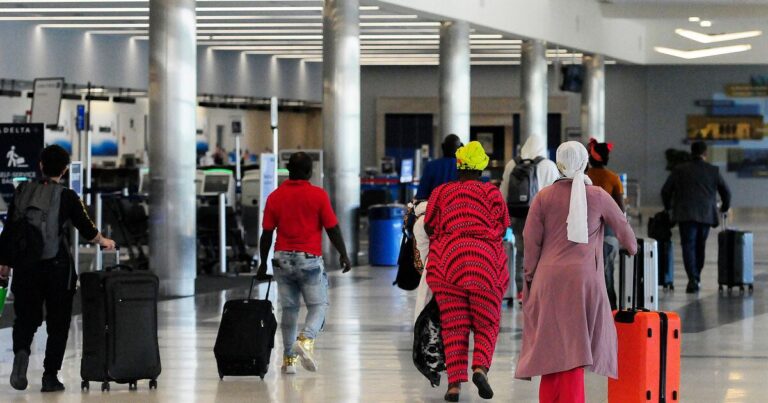Ohio is expected to see 3.3 million people travel over the long weekend, an increase of 5.2% from last year, with almost more people traveling than last year and many more than on Memorial Day, according to AAA.
“All across the country, we have people who are not burdened by schedules,” said Kara Hitchens, spokeswoman for the AAA Club Alliance. “Here in Ohio, most of our schools let out around Memorial Day … (but) a lot of communities on the East Coast don’t let out at that time, they even stay for part of June.”
Additionally, while Memorial Day weather can be “a little iffy,” travel conditions around July 4 are generally much more favorable, Hitchens said.
This Independence Day week is also expected to set a new record for the number of Americans traveling by car for the holiday. AAA predicts that 60.6 million people will travel to their destination by car, or 2.8 million more travelers, compared to 57.8 million in 2023 and surpassing 55.3 million people in 2019.
The majority of people – more than 3 million Ohioans – will drive to their destination, an increase of 5.1%.
The good news for many Americans is that gas prices this summer are lower than they were a year ago nationally. As of Friday, the national average for a gallon of unleaded gasoline was $3.50, down from $3.56 a year ago, according to AAA. In Ohio, the average for a gallon of gasoline was $3.57 Friday, up from $3.36 a year earlier due to the price cycle.
This trend was also followed in Dayton ($3.25 in 2023 to $3.55 in 2024), Springfield ($3.38 to $3.60) and Cincinnati ($3.40 to $3.62).
Price cycling occurs when stations increase their prices by 25 to 40 cents per gallon after ignoring minor market fluctuations and selling themselves one or two cents less each day until they exhaust their margin.
The worst times to travel by car before and on July 4 are between 2 p.m. and 7 p.m., according to INRIX, a transportation data and insights provider. Motorists should start their drives in the morning, and travelers returning on July 8 should avoid morning and afternoon rush-hour traffic.
Drivers in major metropolitan areas can expect the worst traffic delays on Wednesday when leaving the city and on Sunday when returning, according to Bob Pishue, a transportation analyst at INRIX.
“Traveling by car during the holiday week could take up to 67 per cent longer than normal,” Pishue said in a statement. “Travelers should monitor 511 services, local news stations and traffic apps for real-time road conditions.”
Air transport booming
Air travel is expected to set a new record. AAA predicts that 5.7 million Americans will fly to their destination this Independence Day weekend. This is an increase of almost 7% from last year and 12% from 2019, when a previous record air travel for Independence Day weekend was set. established with 3.9 million travelers.
With airfares down slightly from last year, about 121,000 Ohioans plan to fly to reach their destination, a 4.1% increase.
Gilbert Turner, director of aviation at Dayton International Airport, said load factors have increased recently.
“The overall load factor for May was 89.3%, which is an increase over the same period last year,” Turner told this news outlet.
To ensure smooth operations and effectively assist passengers, the airport will have increased police personnel, and additional baggage handlers and customer service agents will be on duty.
“TSA will have adequate staff to process passengers at the security checkpoint,” Turner said. “We strongly recommend that passengers arrive at Dayton International Airport at least two hours before the flight is scheduled to depart.”
Buses, trains and cruises continue to advance
Hitchens said she was “surprised and amazed” to see that the trend of “other travel,” namely buses, trains and cruises, continues to increase so significantly.
AAA expects 4.6 million people to travel by bus, cruise or train this weekend, an increase of 9% from last year.
In Ohio, other modes of transportation are close to pre-pandemic numbers, with 199,716 people expected to take the bus, cruise or train over the long weekend. This represents an increase of 10.3% compared to last year.
“We continue to see that cruises are very popular…with baby boomers and are becoming increasingly popular with Gen Z.’” Hitchens says. “Cruise ships have added a number of family cruisers, so (now, with) cruising, there can be a ship for every generation and everything on board for everyone.”


